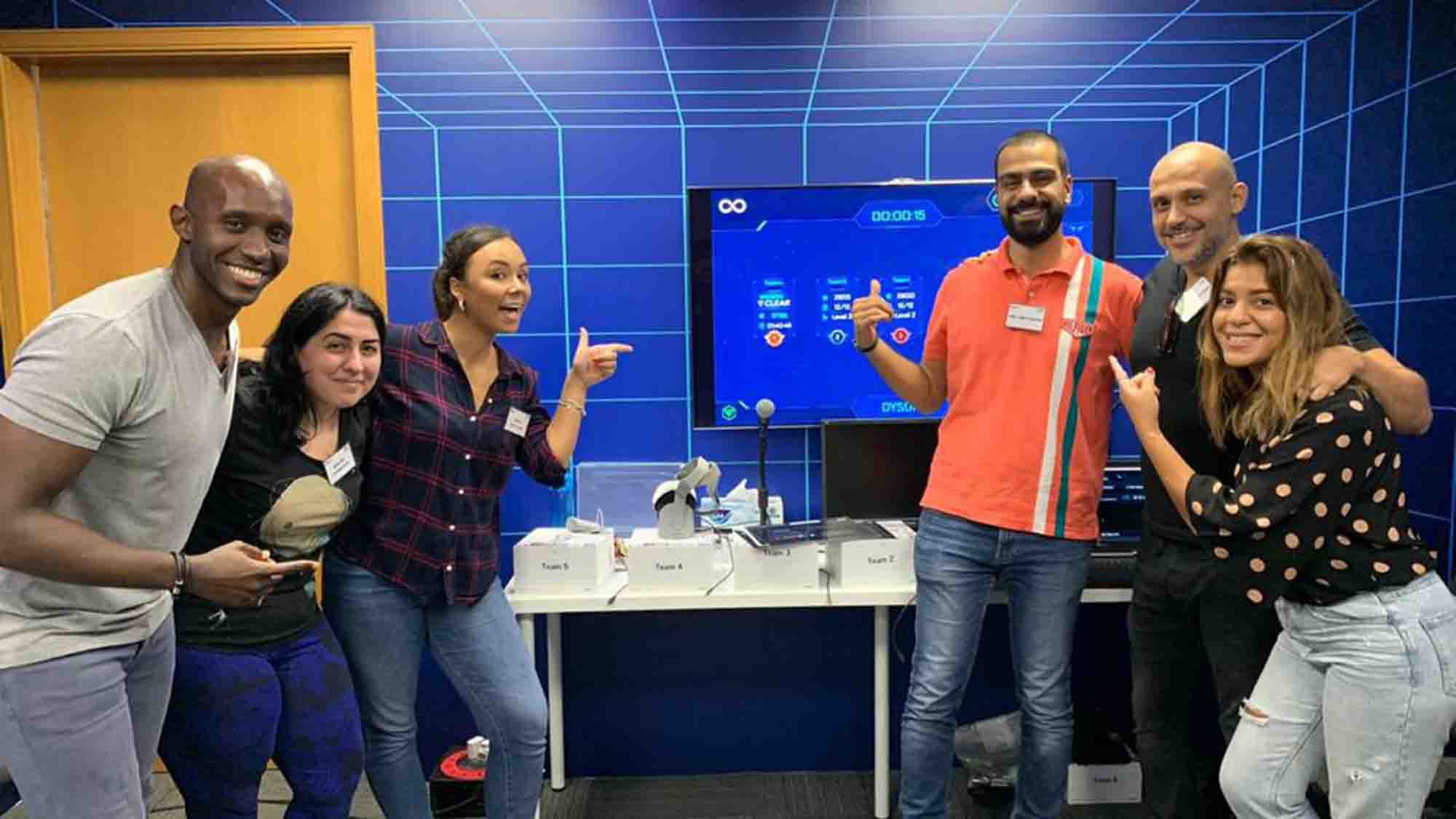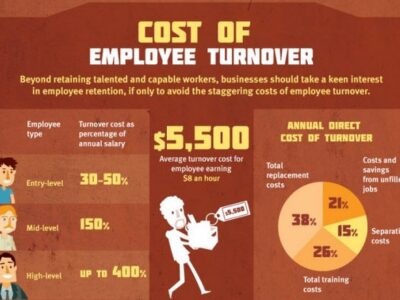For most generations, it’s easy to think back to a time when workplaces looked much different than they do today. Since then, technological advancements have changed the way we work. Thanks to smartphones, collaboration software, and cloud technology, the modern workplace has become faster, more collaborative, and no longer restricted to company real estate.
In the latest episode of the Team Building Saves the World podcast, John Chen, CEO, and founder of Geoteaming joins us to talk about how these technologies can be used effectively to engage teams.
According to John, “it goes back to authenticity, vulnerability, and storytelling.”
“So some of the future means to go backward, go back and search back through all the things that are still really useful and effective here on virtual. A lot of this has got to get easier,” says John.
In this article, we’ll explore how business leaders can utilize modern workplace technology to increase employee engagement.
Benefits of Using Technology in the Workplace
In the context of the global pandemic, the importance of technology in the workplace can no longer be understated – it is now a core component of modern organizational success.
Let’s take a closer look at why you should care about the rise of technology in the workplace and the commercial impact it can have on your business.
Better Customer Experience
Good customer experience drives sales. A recent PWC report showed that 65% of all consumers find a positive experience with a brand to be more influential than great advertising. Gone are the days when customers were content with a 2 or 3-day response time for a query or question from your customer support team. Today, a nearly instantaneous response is expected.
Equipping your team with the right technology such as chatbots and instant messaging to receive and resolve customer issues quickly and efficiently alleviates frustration and allows them to complete their tasks faster.
This is a chance for organizations to be creative with customer experience.
As John Chen stated:
“There was definitely some research that said creativity was down during this time, although that does not match my personal experience. We were the most creative we ever had to be. How much more creative have you had to be about every unknown, unprecedented, challenge, and pivot you had to go through in the last two years?”
Improved Productivity
Productive employees lead to increased profitability. In fact, according to a poll by Gallup, this increase could be as high as 21%.
Business processes that were once manual, time-consuming, and fraught with human error, can now be achieved in a fraction of the time with next to 100% accuracy. The automation and digitalization of these processes give your employees the ability to focus with greater capacity on tasks that generate revenue and grow business.
Greater Employee Retention
Increasing retention rates decrease costs. Some studies predict that replacing an employee can cost up to 9 months of the role’s salary.
Following the Great Resignation, employers are continuing to recover and implement strategies to attract and retain top talent. The workplace landscape has been undeniably altered and more power lies in employees’ hands than ever before.
Employees now expect flexibility and autonomy with their work. The crux of meeting this expectation comes down to the right technological infrastructure in companies to support everything from their onboarding experience to their team building activities.
4 Way To Use Technology To Engage Employees
The simple existence of these technologies is not enough to add value to your organization. It requires organizations to select the most relevant use cases, strategically implement them to ensure they become embedded in the organization, and continuously monitor their adoption.
Here are 4 ways that you can do just that:
1. Revamp Your Development Strategy
Employee training and development should be an essential part of your strategy to remain competitive. Research has shown that employees who see good opportunities to learn and grow at their organization report being nearly four times happier, compared to their peers.
When it comes to learning formats, old-school workshops and class-room style sessions no longer meet the needs of today’s changing workforce. A suite of e-learning options is now commonplace, offering both off-the-shelf and tailored education solutions. Employees can even learn from prestigious universities like Harvard and Yale from the comfort of their own homes.
2. Implement Real-Time Performance Management
Performance management gets a bad reputation and is often used as a synonym for ‘under-performance’; however, this is now one of the most innovative areas of workplace technology.
Improving both the quality and frequency of performance-related feedback has been proven to have a positive effect on engagement levels. Gallup’s research showed that employees are 3 times more engaged when they receive daily feedback from their managers vs. annual feedback.
Performance management technology allows you to track real-time feedback and the collection of data to make more informed decisions around promotions, hiring, and compensation.
3. Re-Think Team Building
Over the last two years, water-cooler breaks and quick huddles for brainstorming have been replaced by strings of online meetings and the constant beep of instant messages. In fact, Gartner reported a 44% increase in the use of collaboration tools since 2019.
In today’s business world, it’s more and more common to find office-based teams collaborating with remote co-workers, in a term we now define as ‘hybrid’. Hybrid events use the best of both worlds to provide a smart and efficient way to build culture and foster collaboration within teams. Using various technologies like iPads, custom apps, and browser-based activities to engage teams can be customized to bring them together from practically anywhere in the world to suit your company and culture.
Using technology to engage your team doesn’t just have to refer to virtual meetings and events. Better yet, see your team’s faces when you bring out the virtual reality goggles. In the Infinite Loop, through the magic of VR (virtual reality), teams compete to rescue a prisoner trapped in the virtual world. Get ready to see grown adults having fun together like children.
4. Get Closer to Your Employees
The opportunities provided by workplace communication technology can boost employee engagement by reducing the distance between you, your management team, and the rest of your workforce.
Simple, but effective tools like webinars allow you to distribute company information differently. Leadership meetings where attendance was once limited by travel expenses and geographical locations, can now be opened up to a wider audience.
Corporate communications are no longer limited to only email but can be supported by interactive virtual meetings. As John Chen, connoisseur of technology and an accomplished author mentioned in the podcast:
“A good portion of our communication is body language. And that if you turn off the camera, you lose all that. And so why, you know, if you have all the technology if you have all the bandwidth, why would you throw that piece away.”
Take the Next Step
Recognizing the fundamental nature of how you engage with your employees has changed and allows you to embrace the opportunities presented by the ever-growing suite of workplace technology at your disposal.
To learn more about how you can use technology to engage your workforce, be sure to listen to the entire Team Building Saves the World podcast with John Chen.
You can also explore our range of other TeamBonding activities that can help you strengthen relationships in your team and keep your employees motivated in the modern workplace. Contact us if you’re interested in exploring customized team building activities tailored to your team’s unique needs.















